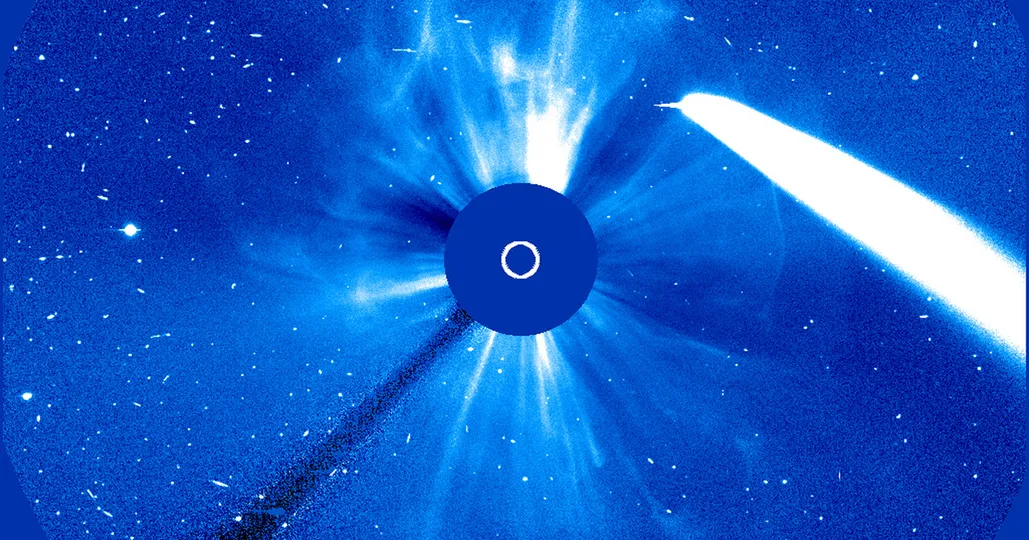The European Space Agency (ESA) has published a record made by the SOHO space observatory. It shows comet C/2023 A3 (Tsuchinshan — ATLAS).
The SOHO observatory is a collaborative project between NASA and ESA. It was launched in 1995 and is located on a halo-orbit around the L₁ Lagrangian point of the Earth-Sun system. SOHO collects information about the Sun’s activity, the state of its atmosphere, and measures the characteristics of the solar wind.
Unexpectedly for the designers, SOHO also turned out to be a surprisingly effective tool for finding comets. For almost a quarter of a century of operation, the observatory has found more than 5,000 such objects. The majority were small near-solar comets that were destroyed by the Sun while passing perihelion. But last week, SOHO had the opportunity to observe a much more impressive tailed guest, coming to us from the Oort cloud.
We are talking about comet C/2023 A3 (Tsuchinshan — ATLAS). It was observed by SOHO in the period from October 7 to 13, 2024, which allowed to make an animation of its flyby. The observatory’s footage provides a clear view of the comet’s nucleus. It is surrounded by a dust coma and has an impressive tail that curls as it is pushed away by the solar wind.

Comet /2023 A3 has reached a peak brightness just above -4th magnitude. Of the more than 5,000 comets observed by SOHO, only comet C/2006 P1 (McNaught) was brighter with a magnitude of -5.5. At the end of the video, you can also see a rare phenomenon known as an “anti-tail”: a long thin line pointing toward the Sun. This tail is an optical illusion resulting from SOHO seeing from the edge of the larger comet dust particles that accumulate in the plane of its orbit.
In addition to the comet, Mercury (a bright object to the left of the Sun) was also in the image. The Sun itself was not idle either. During the week that SOHO observed the comet, it produced at least 4 X-class flares (the most intense type), 28 medium-intensity M-class flares, and 31 coronal mass ejections. The latter are seen as white clouds of matter. All this activity led to two geomagnetic storms on Earth, resulting in beautiful auroras lighting up the night sky.
You can also enjoy a selection of the best images of comet C/2023 A3 (Tsuchinshan — ATLAS) taken around the globe.


